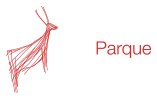Coa Museum headquarters the new Prehistoric Art National Network
The Museum of Pre-historic Art and of the Sacred of the Tagus Valley in Mação saw the founding declaration of the Prehistoric Art National Network, having been present representatives of the following entities: Coa Park Foundation, Alijó, Alandroal, Arcos de Valdevez, Arganil, Arronches, Figueira de Castelo Rodrigo, Fundão, Mação, Macedo de Cavaleiros, Meda, Mirandela, Torre de Moncorvo, Montemor-o-Novo, Oliveira de Frades, Pinhel, Ponte da Barca, Reguengos de Monsaraz, Valença do Minho, Vila Nova de Foz Côa, Vila Velha de Ródão Municipalities, Alentejo Regional Directorate of Culture, Faculty of Letters of the University of Lisbon, Faculty of Letters of the University of Porto, Faculty of Letters of the University of Coimbra, Institute of Social Sciences of the University of Minho and Polytechnic Institute of Tomar.
Objectives
The Prehistoric Art National Network, a non-profit association, will have the following objectives, in strict compliance with the terms of the Law:
a) To promote, value and capacitate the patrimonial and human resources of the entities integrated in the Network;
b) Enhance the impact and mission of prehistoric art sites;
c) Establish mechanisms for sharing physical and human resources;
d) Create appropriate communication channels for the development of collaborative projects;
e) To promote cooperation with similar international networks;
f) To promote the expansion and diversification of the resources of the management entities of the sites with prehistoric art and the financial sustainability of the respective projects.
g) Promote the work of inventorying sites in the territories of the Network, as well as their classification and/or inclusion in the PDM’s and other registers.
h) To promote the monitoring and the adoption of conservation measures of the sites located in the territories of the Network.
i) To promote inclusion in the school curricula of prehistoric art subjects.
j) To promote the creation of public visiting programs, of local and regional scope.
k) Promote and support research projects that focus on prehistoric art.
k) To promote social inclusion, increase knowledge, self-esteem, and sense of belonging of the communities of the Network’s territories.
Composition
1. The Prehistoric Art National Network is composed of institutions admitted by the General Assembly.
2. The institutions that integrate the Prehistoric Art National Network have two years, from the date of their adhesion, to adapt to the fulfillment of what is defined in the regulation that will be adopted.
The formalization of the constitutive act is scheduled for October 9, European Day of Rock Art, at the Côa Museum, which will be the headquarters of the Network.


